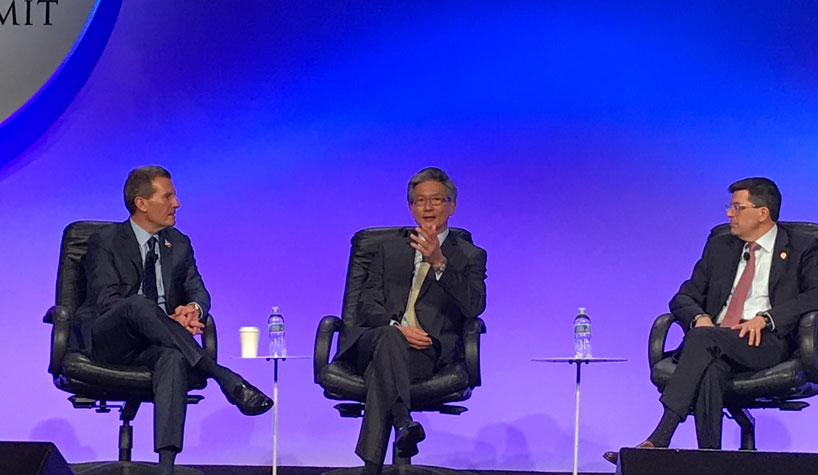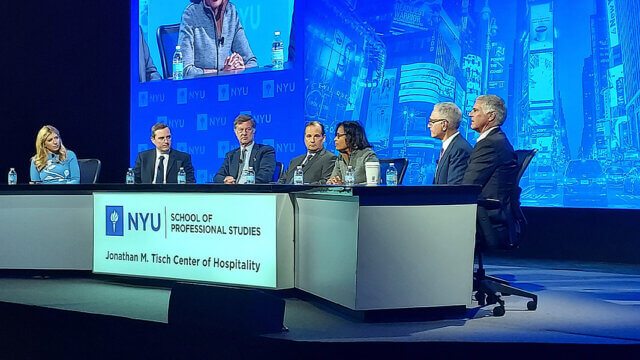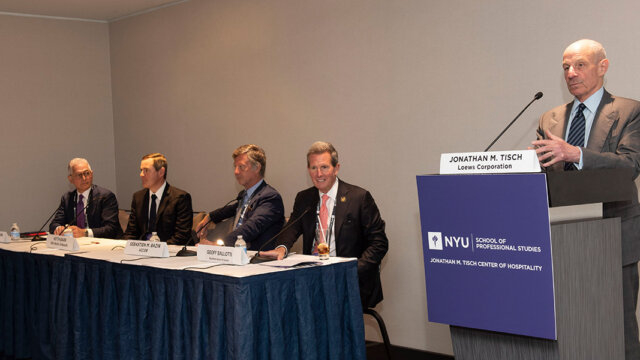LOS ANGELES—More than 3,000 delegates have gathered at this year’s Americas Lodging Investment Summit (ALIS) to find out the future of the industry. For now, industry experts are expecting more of the same in 2019, but they’re not so certain about 2020. Panelists during the general session covered several trending topics, including where the industry is heading, brand standards and advocacy.
Key takeaways from the morning’s stats session (panelists included Cindy Estis Green, CEO/co-founder of Kalibri Labs; Vail S. Ross, SVP of STR; R. Mark Woodworth, senior managing director of CBRE Hotels; and Mark Wynne Smith, global CEO of hotels at JLL):
- Highly liquid markets include Boston, Miami, San Diego and San Francisco.
- Cap rates held steady in H2 2018 but are expected to trend up in 2019.
- In 2019, supply is expected to increase by 1.9%; demand is forecast to increase by 1.9%; occupancy is projected to remain flat; RevPAR is forecast to increase by 2.3%; and ADR is expected to increase by 2.3%.
- Hotel debt markets are expected to remain strong throughout 2019, but the ultimate trajectory of the market will remain closely tied to what happens in Washington, DC.
- There’s a 40% chance of a recession in 2020.
- In 2020, supply is expected to increase by 1.9%; demand is forecast to increase by 1.7%; occupancy is projected to decrease by 0.2%; RevPAR is forecast to increase by 1.9%; and ADR is expected to increase by 2.2.
- Increased robotics can help labor shortage issues in the industry.
Key takeaways from the morning’s first CEO panel (panelists included Michael George, president/CEO of Crescent Hotels & Resorts; Ken Greene, president, Americas, Radisson Hotel Group; and Greg Mount, president/CEO of RLH Corp.):
- Not every property needs a brand. There are plenty of independent properties in the market doing well. Soft brands can sometimes negatively impact properties.
- The battle over who owns the customer continues. OTAs are being disrupted by the disruptors.
- There are a lot of antiquated products in the market today. These properties are antiquated for a reason: Simply, customers don’t like the products.
- Even though they’re properly trained, revenue managers can’t think as fast as computers.
- Brand standards need to deliver an ROI for owners, so collaborating with owners and managers is essential if hospitality groups want to create standards beneficial to properties.
Key takeaways from the morning’s second CEO panel (panelists included Chip Rogers, president/CEO of AHLA; Geoff Ballotti, president/CEO of Wyndham Hotels & Resorts; David Kong, president/CEO, Best Western Hotels and Resorts; Rob Palleschi, CEO of G6 Hospitality; and Champ Patel, CEO of Champion Hotels):
- The industry is more unified than ever.
- Filling available jobs is a topic the industry should remain focused on. There are more than 900,000 open positions.
- Loyalty programs are key to success. Without them, distribution is limited. It’d be nearly impossible for owners to compete with OTAs without loyalty programs.
For additional ALIS coverage, don’t forget to pick up a copy of the Feb. 15 issue of Hotel Business.


